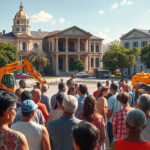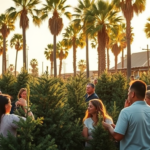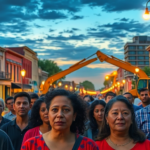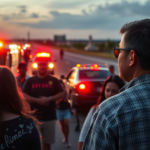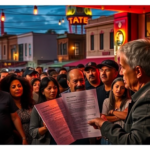My apologies, it seems I misunderstood your request. Here’s the correctly aligned content:
Man Sentenced to 10 Years for 2021 Brownsville Shooting
A Brownsville court has sentenced a man to 10 years in prison in connection with a tragic shooting that took place in 2021. The incident, which left one person dead, has since loomed large over the community, raising concerns about violence and its repercussions in the Rio Grande Valley (RGV).
The Case That Shook the Community
The shooting incident occurred in the heart of Brownsville two years ago, shaking the neighborhood as it underscored persistent issues around violent crime in South Texas. The convicted individual, whose name is omitted for legal reasons, was found guilty of manslaughter after a lengthy trial process. The crime, which claimed the life of a young resident, also highlighted the struggles faced by local law enforcement agencies and the courts in curbing gun violence.
In a statement following the sentencing, Cameron County District Attorney Luis Saenz emphasized the importance of justice for the victim’s family. “While no sentence can bring back the lost life, this verdict provides a sense of closure and justice. It’s a reminder of the need to address violence that affects our community deeply,” Saenz noted.
Local Impact and Reactions
The sentencing has reverberated through the Valley, sparking conversations on both public safety and the judicial process. Many community members see the verdict as a step towards restoring a sense of safety and order, although questions about ongoing challenges remain.
Anna Perez, a Brownsville resident and community organizer, commented on how incidents like this shape the community’s perception of security. “There’s a shared fear among residents about violence, and every tragic event like this chips away at our sense of safety. The trial’s conclusion may offer some reassurance, but there’s more work to be done to prevent future tragedies,” Perez stated.
Ongoing Concerns and Connections to Broader Issues
This case connects to broader concerns within the RGV about crime rates and resource allocation for crime prevention. Valley residents, while hopeful that justice has been served, continue to call for increased public safety initiatives and community support structures.
The challenges highlighted by this case are not isolated. Several recent incidents have put a spotlight on the need for enhanced collaboration between law enforcement and community organizations to effectively address the root causes of violence. As articulated by Brownsville Police Chief Felix Sauceda, “Building stronger community relations and ensuring our residents feel supported and heard are crucial steps in reducing crime.”
Future Implications for the Rio Grande Valley
Looking ahead, the case sets a precedent for handling similar crimes within the community and beyond. It also raises important questions about sentencing disparities and rehabilitation opportunities for offenders, which remain critical components in the broader discussion on criminal justice reform.
For the RGV, the focus now shifts to how the community and law enforcement can work together more effectively to prevent violence. Support from both local leaders and residents could lead to the implementation of targeted programs designed to engage at-risk youth and address systemic issues contributing to crime.
Safety expert Dr. Elena Morales, from the University of Texas Rio Grande Valley, suggests that comprehensive community-based strategies can be an effective tool. “Addressing the socio-economic factors that lead to crime, such as poverty and lack of educational opportunities, is essential. Collaborative efforts can lead to sustainable outcomes and safer communities,” she elaborated.
Resources and Support for Valley Residents
In response to the ongoing safety concerns, Brownsville city officials have rolled out several community resources. A series of workshops and initiatives aimed at empowering individuals and teaching conflict resolution are set to launch in the coming months. For those affected by crime or seeking support, local hotlines and counseling services are readily available.
This case illustrates the ongoing journey of the RGV community in finding balance between justice, safety, and healing. As the community comes to grips with the outcome, it underscores the resilience and commitment of Valley residents to overcome challenges and forge a safer future.
In conclusion, while justice has been served in this specific case, the broader issues demand persistent attention and action. The path to a safer RGV involves collective responsibility and proactive measures, ensuring that such tragedies become an exception rather than a norm.


